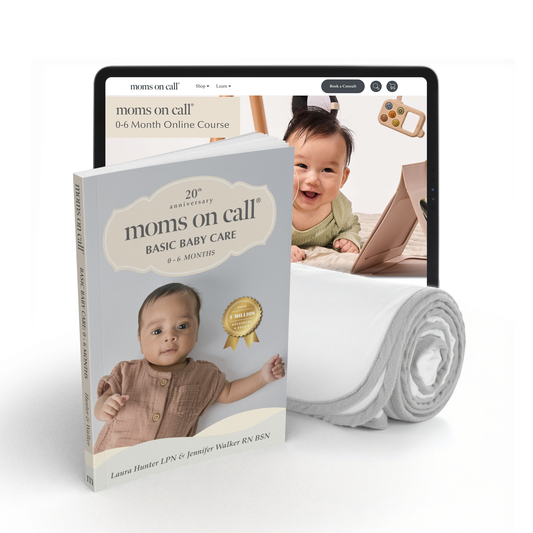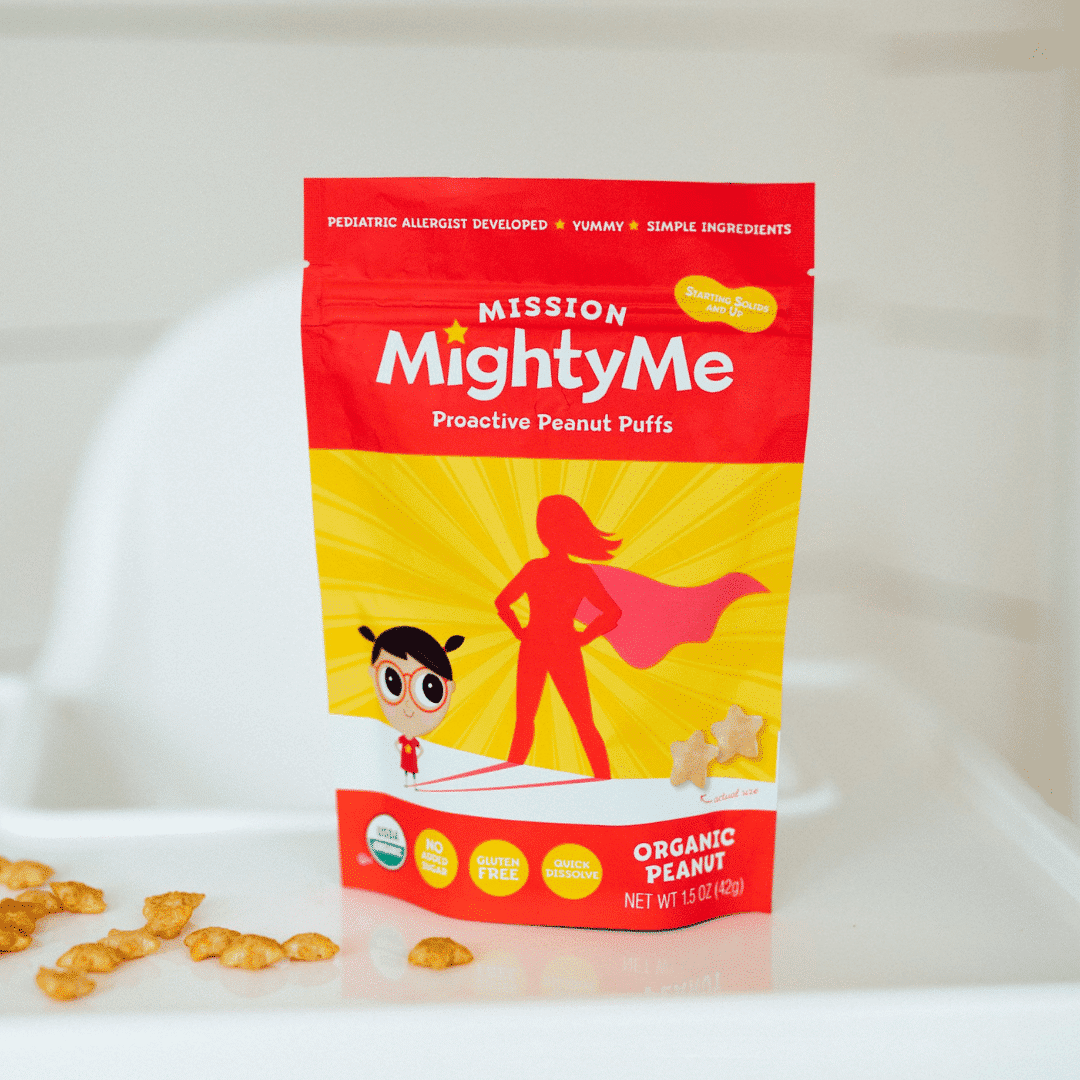Introducing common food allergens to a baby can feel overwhelming and maybe even a little scary.
We've partnered with Mission MightyMe to bring you the facts and give you a step-by-step guide for the baby allergen introduction. Because not only can there be life-long benefits to early introduction of allergens, but feeding babies should be fun and stress-free!
Early Allergen Guide, at a Glance:
-
Did you know that most peanut allergies are preventable?
- Groundbreaking research has shown us that most peanut allergies are preventable if peanut foods are introduced in the first year of life and eaten regularly.
- Dr. Gideon Lack, Global food Allergy prevention expert and Co-Founder at Mission MightyMe, led the LEAP Study. You can read more about this study and its findings here.
-
How do you know if your baby is ready for solids?
- This can depend on their development, but most babies are ready for solids between 4-6 months of age.
- Here are some signs we look for to begin:
- Baby is able to control their head and neck.
- Baby can sit up with or without support.
- Baby is showing interest in food and reaching for it.
- Baby is bringing objects to their mouth.
- Baby is losing the "tongue thrust reflex" that pushes food out of the mouth.
-
How can you be sure baby is ready for an early introduction of allergens?
- The majority of babies can begin peanut foods and other common allergens as soon as they've begun other solid foods.
- Please note: If your baby is high-risk (severe eczema and/or egg allergy), the AAP recommends evaluation by a doctor, and possible allergy testing, first.
-
What are the signs of an allergic reaction, and how can you respond?
- Allergic reactions are a common concern. However, they are rare. Here we briefly discuss the mild to moderate symptoms as well as severe symptoms and how to respond.
- Mild to Moderate Symptoms: This may include itching, sneezing, hives, rashes, nausea, vomiting, diarrhea, or even stomach pain.
- If two or more body systems are present (e.g., vomiting/stomach & hives/skin), it is considered high risk.
- Severe Symptoms: This may include trouble swallowing or breathing, loss of consciousness, and a weak pulse.
- Severe symptoms can be a sign of life-threatening anaphylaxis and require immediate treatment with epinephrine. In the case of severe symptoms, administer an EpiPen if available and go to the nearest emergency room.
- Mild to Moderate Symptoms: This may include itching, sneezing, hives, rashes, nausea, vomiting, diarrhea, or even stomach pain.
- Allergic reactions are a common concern. However, they are rare. Here we briefly discuss the mild to moderate symptoms as well as severe symptoms and how to respond.
-
What are some do's and don'ts for early allergen introduction?
- DO: Start with other solids first!
- We recommend introducing commonly allergenic foods after your little one has successfully eaten other solid foods like cereals, veggies, or meat purees!
- DON'T: Introduce multiple baby food allergens at one time.
- This way, if there is any sign of a reaction, you will know which food caused it.
- DO: Start Small!
- Begin with a small amount of the allergen and monitor your baby.
- DON'T: Use whole nuts or nut butter.
- These are common choking risks to babies and toddlers. Prep soft foods that are easily dissolved with saliva.
- DO: Download the Early Allergen Introduction guide for more Do's and Don'ts to Early Introduction.
- DO: Start with other solids first!
-
What is a baby-friendly way to introduce a top allergen?
- In the guide, Mission MightyMe shares baby-friendly ways to introduce the 9 most common baby food allergens, including; peanut, egg, tree nut, dairy, soy, sesame, wheat, & fish/shellfish.
- How can peanuts be introduced to a baby?
- Mission MightyMe has created the "Proactive Peanut Puff."
- This peanut puff is made from smooth peanut butter diluted with warm water and cooled.
- Mission MightyMe has created the "Proactive Peanut Puff."
-
How can you diversify a baby's diet?
- Once you have introduced each allergen separately, you can begin integrating them into your weekly meal planning. This way baby gets all the benefits of early allergen introduction and a diverse diet!
-
What's Next?
- HAVE FUN!
- Here's a note from Laura Hunter, LPN, and Jennifer Walker, RN, BSN, Co-Founders here at Moms on Call.
- "The important thing to remember when starting solids is to HAVE FUN! We want a low-stress environment for both your baby AND you! Introduce your baby to a wonderful variety of tastes and textures by adding a new baby food about every 3 days. Look out; they make faces, and they spit! Don't get discouraged. They will get it. Let the messy taste testing begin!”
Download the Early Allergen Introduction Food Guide Here!
You've got this!
























